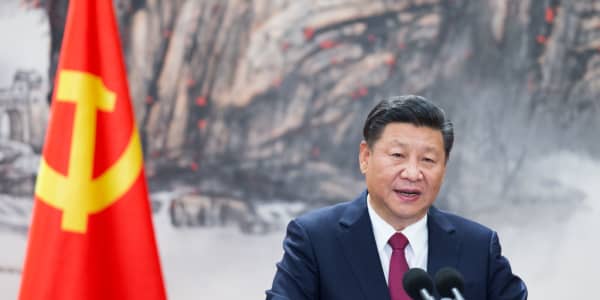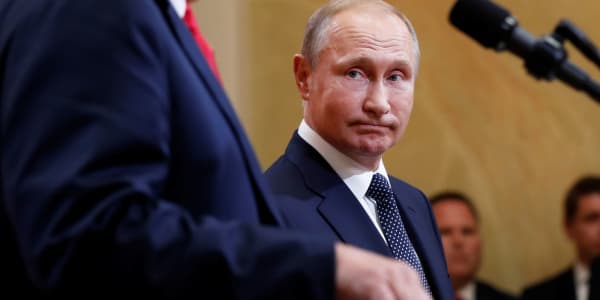Like any good advisor, Scott Kaminsky's goal is to create a diversified portfolio for his high-net-worth clients. That used to be done through broad-based mutual funds that held equities in countries around the world, but three years ago the Morgan Stanley vice president and wealth advisor discovered a better way to get international exposure: country-focused exchange-traded funds.
The Bryn Mawer, Pa.–based CFP's love affair with country-specific ETFs began after the world's stock markets stopped rising and falling in lock step with one another. Now that the global economy is recovering, certain nations are starting to outperform broader benchmarks, while others are struggling.
Kaminsky wants to take advantage of those soaring sovereign states and leave the duds behind.
"It's important to have exposure overseas, but you want to have exposure to countries that are doing well," he said. "So you don't necessarily just want to buy a broad-based ETF that covers, say, the entire emerging markets."
While ETFs have been giving investors easy access to diversified baskets of stocks for two decades now, it's only recently that investors and advisors have been using these instruments to invest in more specific non-U.S. markets, said Aniket Ullal, founder of First Bridge Data, a Fremont, Calif.–based ETF data provider. The ease of this approach has fueled the trend: Because it trades like a stock, an ETF allows you to sell short, buy on margin, and purchase as many shares as you want.
Usually, an ETF investor buys a fund that tracks his or her home index, and then that purchases broader-based securities, such as iShares' MSCI Emerging Market Index (NYSE ARCA: ), or iShares' MSCI EAFE ETF (NYSE ARCA: EFA), to get access to other global markets.
While the majority of ETF investors still buy more all-encompassing funds to access international markets, inflows into country funds are on the rise. According to ETFGI, an independent investment research firm, over the last five years, assets in non-U.S. country funds have grown by 204 percent to $376 billion.
(Read more: ETFs: If you don't know about them, you should take a look)
These funds aren't for everyone. It's typically for savvier investors who want to buy into a certain investment theme.Dodd KittsleyBlackRock's global head of ETF research
A risk-management tool
There are three reasons why countries' ETFs are becoming more popular, said Ullal. First, there's been an explosion of ETF options over the last five years. In 2008 there were 1,078 ETFs for sale globally; today there are more than 2,250. Most international markets now have an ETF that tracks a general index, though in developed countries and some emerging ones, such as China, you can buy small-caps, large-caps, technology and more.
Second, there are now a plethora of currency-hedged ETFs that allow investors to buy into a country without taking on currency risk. Ullal pointed out that one of this year's most popular country funds is the WisdomTree Japan Hedged Equity Fund (NYSE ARCA: ). It's attracted $9 billion of investor money year-to-date. People want access to the high-flying Japan market, but they don't want exposure to the yen, which has been falling this year.
It's also cheaper to buy an ETF than a mutual fund. Although many country ETFs are more expensive than their regional counterparts, the cost is still well below often-exorbitant mutual fund fees. For instance, BlackRock's China Fund (BLKCHD2) charges a 5 percent front-end load fee and an annual 1.5 percent management fee. The company's iShares China Large-Cap ETF (NYSE ARCA: ) comes with a 0.74 percent annual fee.
However, just because investors can now own once hard-to-access countries with ease, doesn't mean they should.
(Read more: If the global recovery looks fast, ride growth currencies)
The ABCs of ETFs
Dodd Kittsley, BlackRock's global head of ETF research, said that these funds aren't for everyone. It's typically for savvier investors who want to buy into a certain investment theme. Investors tend to have done their research and have formulated an opinion on which countries are on the upswing and which aren't.
"It's opened up a whole different opportunity set for investors who want to reflect their views by investing in the U.K., China or an emerging market," he said.
These funds are also more volatile than broader-based securities. A nation's market can be affected by a number of things, such as political turmoil, a natural disaster, poor performance of its largest holding and so on. If you own only a few country funds and one tanks, your entire portfolio could be affected.
On the flip side, if you make the right bet, you'll be handsomely rewarded.
"It's a double-edged sword," said Matt Wieand, a senior trader with Austin's AFAM Capital. "It can go your way, or it can go against you."
You can't set it and forget it, like you would with broader funds.Scott KaminskyVice president and wealth advisor, Morgan Stanley
The world's your oyster
You'll improve your chances of higher returns by buying the right kind of fund; with so many to choose from, it can be hard to know which ETF to own. The first step is figuring out what you want to buy in a country. If you want exposure to China's financial sector, then look for a financials-focused country fund, such as the Global X China Financials ETF (NYSE ARCA: CHIX).
Most investors, though, will want broad exposure to a single nation, said Wieand. His Country Rotation Portfolio (ICCIX), a fund-of-funds that holds 20 country ETFs, tends to hold securities that capture the entire market. He'll occasionally purchase something narrower, but far-reaching funds are usually better.
"We like something about that country, so we'll go broad," he said.
Also be sure that the underlying market is liquid. Investors tend to focus on the liquidity of the ETF, but since the fund holds companies on the country's exchange, it's more important that those stocks can be easily bought and sold, said Wieand.
That said, investors should consider sticking with funds that have at least $100 million in assets, said Ullal. The ones that don't meet that target—and there are many—are at a higher risk of shutting down. If there's not enough interest in a fund, the company may decide it's not worth the money to keep it running, he explained.
Diversifying the portfolio
How many country funds you'll want to own depends on how closely you want to watch your portfolio, how much risk you're willing to stomach, and what themes you want to take advantage of. Kaminsky usually holds a handful of country ETFs in places he thinks will outperform the broader market.
He's currently invested in Mexico, China, India and Australia. He also owns regional ETFs, including a European one, to counteract some of the volatility that comes with owning individual country funds.
Some investors, though, will create their own basket of country ETFs and rotate funds in and out as themes change, while others will own just one or two country securities, said Ullal.
While Kaminsky's client exposure to country funds varies—it's ranged from 80/20 broad-based versus country specific and 50/50—he's only now becoming more enamored with country ETFs. He does admit that he's had to put in more work since he's started using these funds, but the additional returns have been worth it.
"You can't set it and forget it, like you would with broader funds," he said. "But if you can stay on top of it, you can reap some decent rewards."
-- Bryan Borzykowski, Special to CNBC.com




